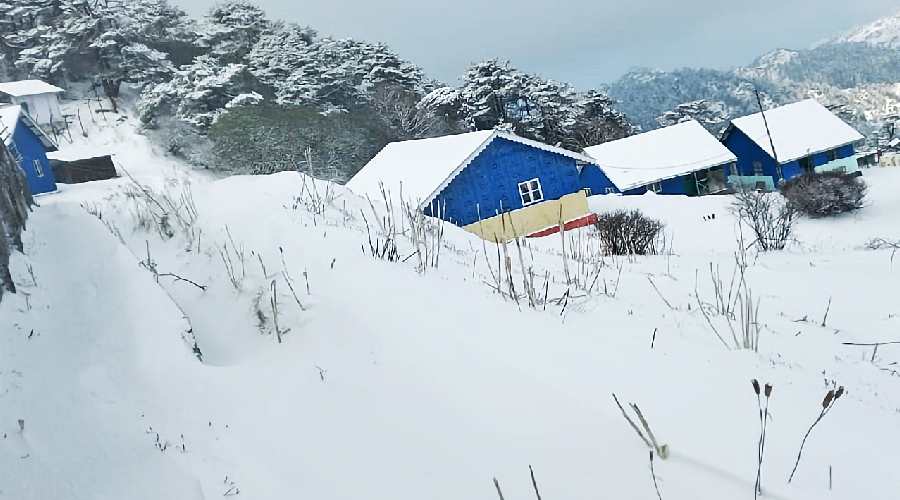Sandakphu, the highest point in Bengal, received the current winter’s first snowfall on Sunday night with the late precipitation indicating the region’s dryness that is likely to have an adverse effect on the famed Darjeeling Tea, the mainstay of the area’s economy.
Sandakphu is situated at an altitude of around 11,900 feet and normally starts experiencing snowfall from November-end. “The area received this winter’s first snowfall around 7 last night. It is rare to receive the first snowfall so late. The precipitation was not very heavy and some stretches received around an inch of snow,” said Chandan Pradhan, the general secretary of the Singalila Land Rover Owners’ Association.
Only Land Rovers are used to take tourists to Sandakphu from Maneybhanjyang, a small town on the fringes of Singalila National Park, because of the difficult terrain. The footfall of tourists is thin with around 20-22 visitors going to Sandakphu every day during the current season, said Pradhan.
Weather experts have attributed the late and less snowfall in the region to a weak western disturbance. “Snowfall in the region depends on the intensity and the position of the western disturbance. This winter, the intensity was weak and moreover, it passed through the north of the Darjeeling hills,” said G.N. Raha, the head of the India Meteorological Department(IMD), Gangtok.
Western disturbances are storms that originate from the Mediterranean region and bring winter rain to north India and this region. The IMD official said there was a deficit of 66 per cent in rainfall in the hills during January and February this year. “There has been a lack of moisture in the atmosphere (during the winter),” said Raha.
The Darjeeling Tea industry depends on the winter rain for both quality and quantity. “This year, the situation is extremely worrisome,” said Sandeep Mukherjee, the principal advisor to the Darjeeling Tea Association (DTA). Picking tea leaves for the premium first-flush tea has just started.
“The first flush accounts for 20 per cent of the annual production but contributes much more (to the income),” said Mukherjee.The first flush teas which are produced until March end or the first week of April fetch the highest prices.
Along with the first flush, the contribution of the second flush to the total production also stands at 20 per cent. The tea manufactured during the monsoon flush makes up 45 per cent of the annual yield and the autumn flush forms 15 per cent of the total production.
Data from the tea industry suggest the region has been receiving less rainfall for several years and the distribution pattern has been erratic. “Our data suggest that the amount of rain in the region has decreased by 22 per cent in the past two decades. Rainfall pattern has also been erratic, which invariably leads to a drought-like condition before the first flush,” said Mukherjee.
Sikkim snow
The higher reaches of Sikkim, including Tsomgo (Changu)Lake in the eastern part of the state, received heavy snowfall on Sunday night, forcing the authorities to suspend issuing travel permits to the area from Monday until further orders.
The Gangtok office of the IMD said Changu had been receiving snow since Wednesday, but Sunday night’s whiteout was particularly heavy. However, the tourist hotspots of Lachung and Lachen in northern Sikkim received very less snowfall, barring places like the Thangu Valley.
“The snowfall was caused primarily by the western disturbances, and the higher reaches of Sikkim would continue to receive snow till Thursday. Some parts of the state are also likely to receive rainfall till Thursday,” said IMD official Raha.
Tourism authorities in Sikkim said the heavy snow had forced them to suspend tourist permits to Changu but would resume issuing the same again once the roads were cleared and it was safe for travel. Lachen and Lachung, however, continue to host visitors, albeit in a trickle.
“In fact, there has been little snow throughout this winter,” said a former pipon (headman) of Lachen Dzumsa.
Additional reporting by Rajeev Ravidas











